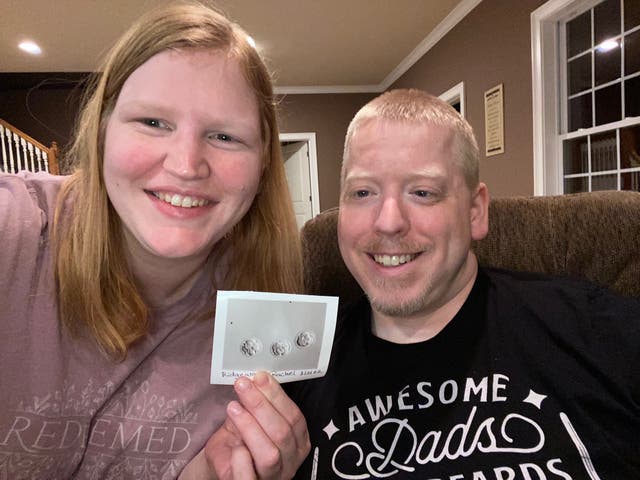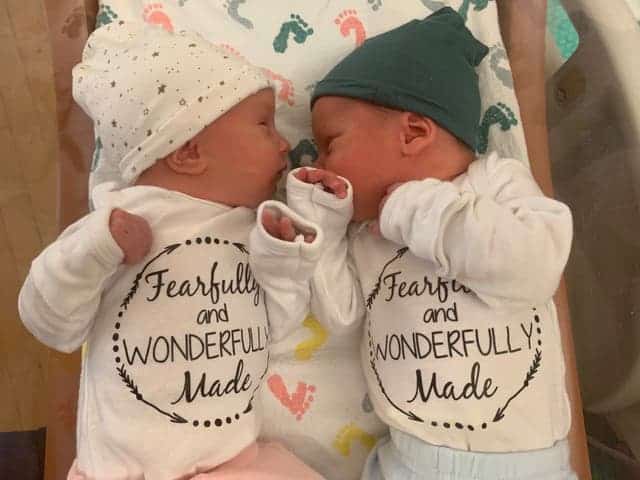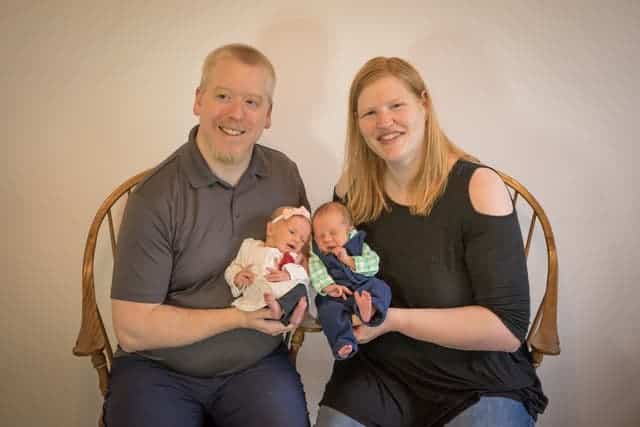A set of twins was born from embryos that had been frozen for the longest amount of time that ever led to a live birth.
On April 22, 1992, the embryos that would become Lydia and Timothy Ridgeway were frozen. They were thawed out and born in Oregon on October 31, 1992. In 2007, the anonymous married couple who made the embryos gave them to the National Embryo Donation Center (NEDC) in Knoxville, Tennessee. Before 2007, the embryos had been kept in a West Coast fertility lab for almost 30 years.
The National Embryo Donation Center (NEDC) says that Timothy and Lydia, who are identical twins, have set a new record for the transfer of an embryo that was frozen for the longest time and then gave birth. In 2020, a baby was born from an embryo that had been frozen for 27 years, and her sister was born from an embryo that had been frozen for 24 years. This tied the record that had been set by the center in Knoxville, Tennessee. Both of these babies broke the center’s record, which had stood since it opened in 2020.
The New England Donor Consortium (NEDC), a faith-based organization that works as a non-profit, does a medical procedure called embryo donation. This is done when a couple going through in vitro fertilization (IVF) makes more embryos than they need. Extra embryos can be cryopreserved (frozen) for later use, given to scientists for their research, or given to people who want to become pregnant and have a child.
Rachel and Philip Ridgeway had just turned 3 and 5 when their twins were conceived by an unknown married couple using in vitro fertilization (IVF). They used the help of a 34-year-old egg donor because the husband was already in his 50s when they had their children.
The Ridgeways looked in particular at a section of egg donor databases called “special consideration.” This meant that it had been hard to find homes for these embryos. This was done while they looked for information in the donor database. Even though the database didn’t show how long the embryos had been frozen, it did show the allotted number of the donor.
The Ridgeways thought that embryos with early donor numbers must have been in the freezer the longest. They didn’t know that they were going to find the oldest embryos ever frozen.

We weren’t looking to get the embryos that have been frozen the longest in the world,”
Philip told CNN.
We just wanted the ones that had been waiting the longest.
Going into this, we knew that we could trust God to do whatever he had sovereignly planned and that their age really had no factor. It was just a matter of whether or not that was in God’s plans,
Rachel said.
The Christians who run the National Embryo Donation Coalition (NEDC) call embryo donation “embryo adoption.” Experts have made it clear, though, that this medical procedure is not the same as adoption. According to a 2016 report by the Ethics Committee of the American Society for Reproductive Medicine (ASRM), using the word “adoption” to talk about embryos is wrong, gives the wrong impression, and could put a lot of stress on the recipients. This should be avoided.

Different states have different laws about whether or not embryo donation is allowed. For donation in the United States, embryos and all other donated human tissues (reproductive and nonreproductive) must meet the same strict standards set by the Food and Drug Administration (FDA). These rules are meant to make sure that both the donor and the recipient are safe. The American Society for Reproductive Medicine (ASRM) says that a pre-donation agreement should be part of most agreements for donating embryos. This is done before the actual donation happens. Once the legal ownership of the embryos is transferred to the recipient, the recipient has the right to make decisions about the embryos and can use them to get pregnant and have a legal child.
Even after embryos have been frozen and stored for the first time, they can be kept frozen for up to 55 years. The Human Fertilization and Embryology Authority says that there is no proof that the length of time that embryos are frozen has any effect on them. Since there is no link between the two, this is the only thing that can be said about them. But a new study has found that using a frozen embryo to get pregnant through in vitro fertilization (IVF) makes the mother more likely to get high blood pressure.

The embryos had been frozen for 30 years. On February 28, they were thawed by Southeastern Fertility, a Knoxville fertility clinic that works with NEDC. Two of the five embryos that were frozen and then thawed could not be brought back to life. Rachel had the last three embryos put into her on March 2, and two of the transfers worked.









